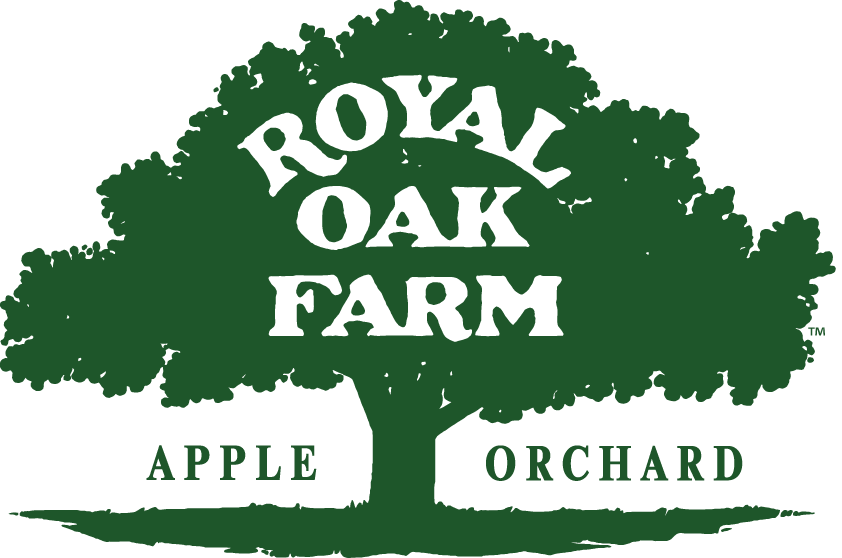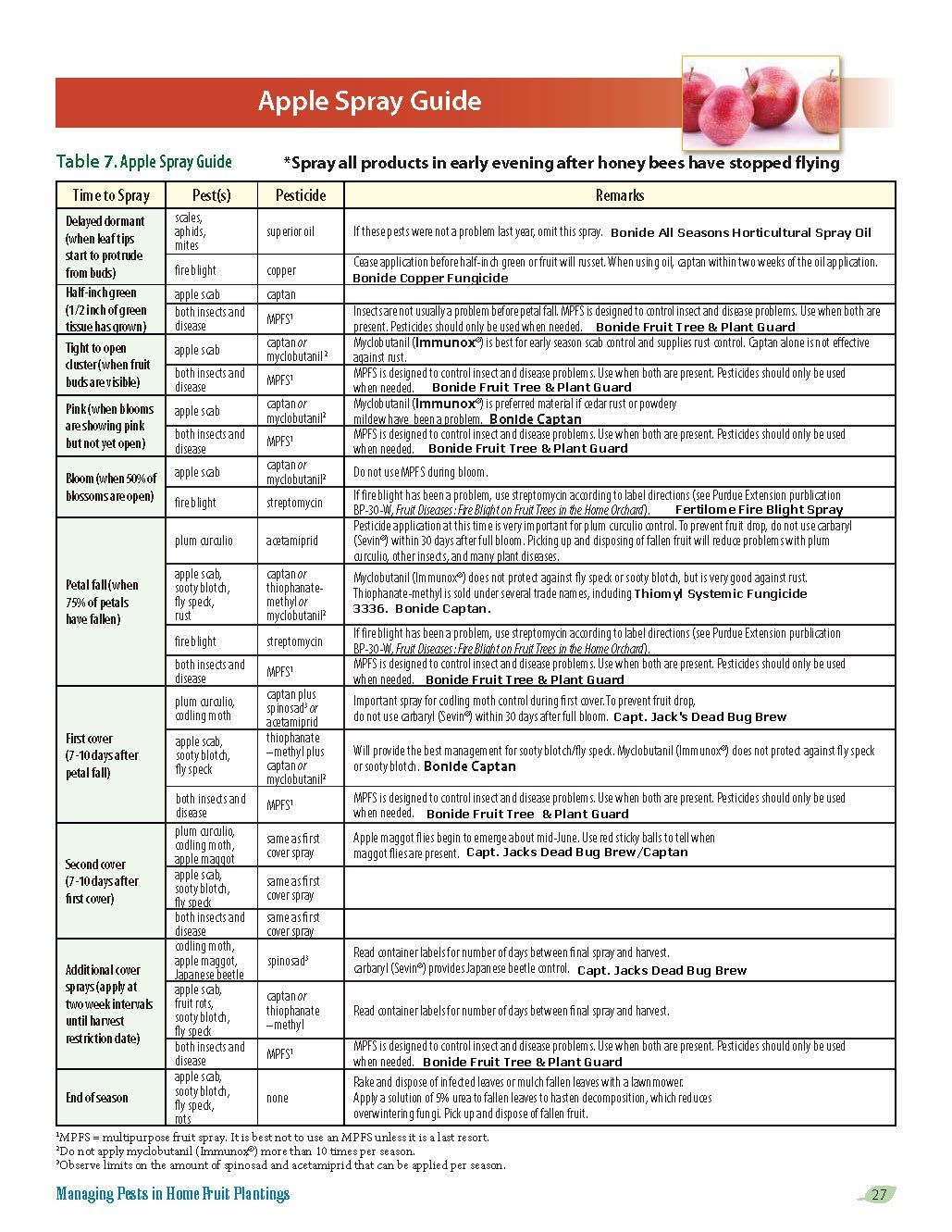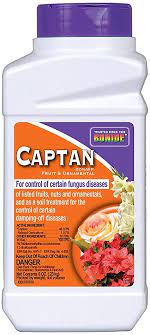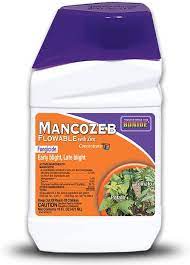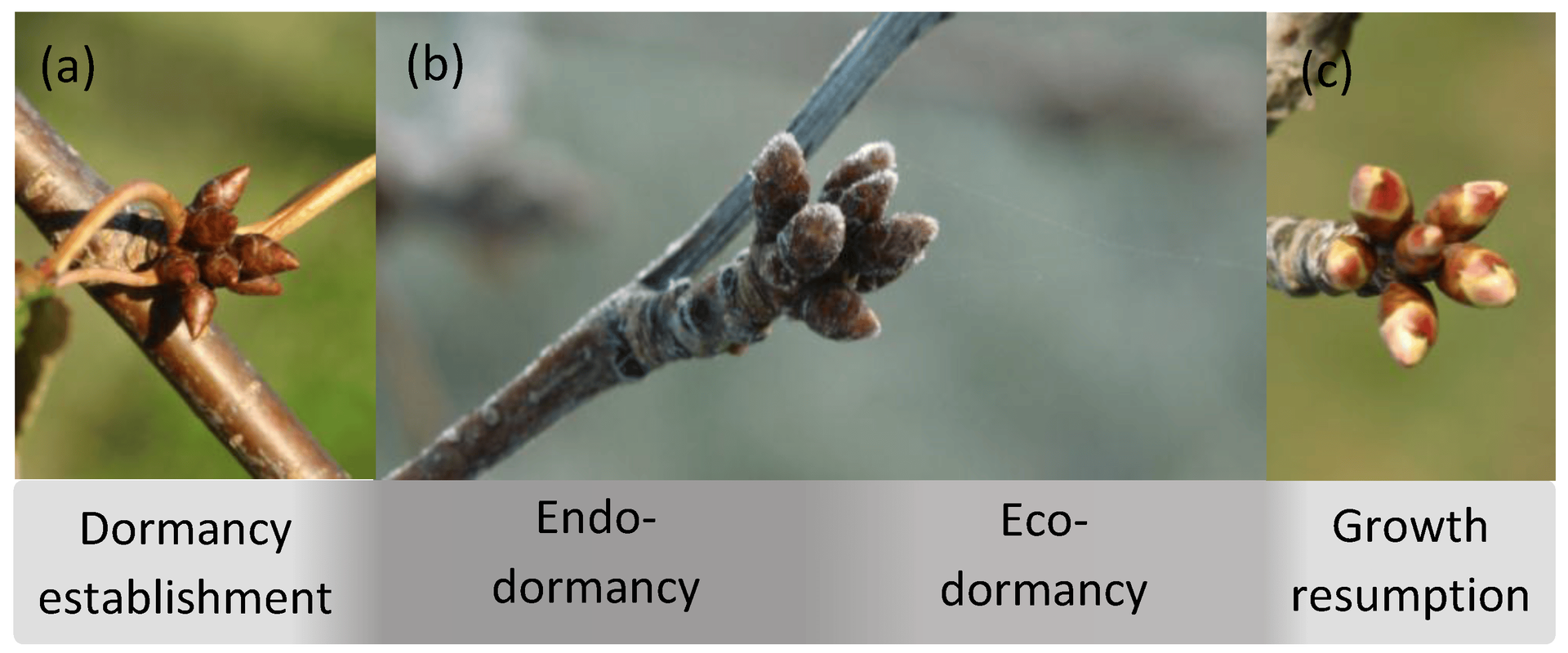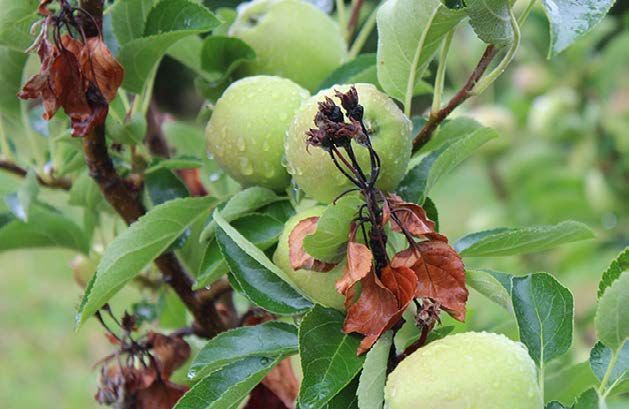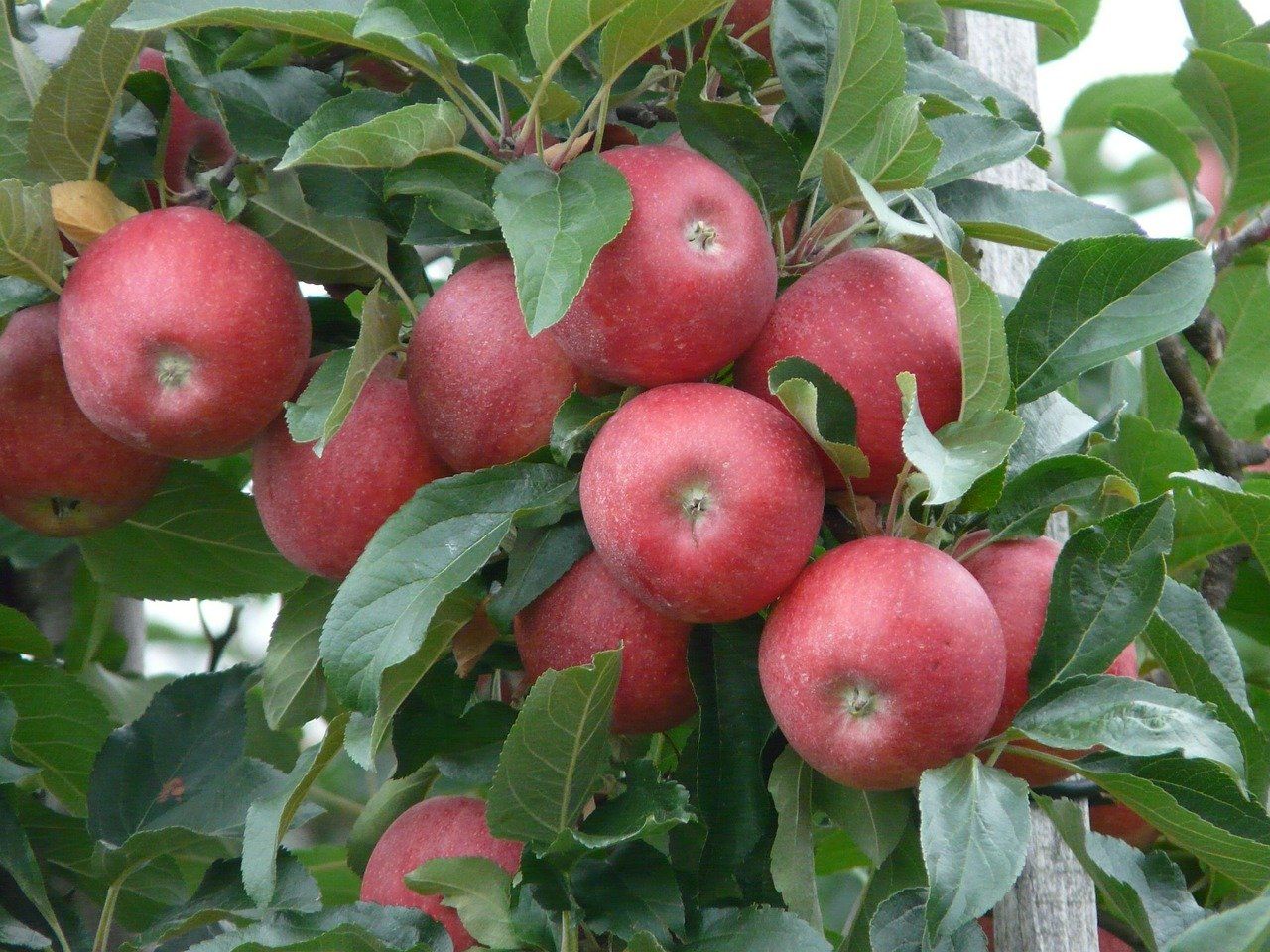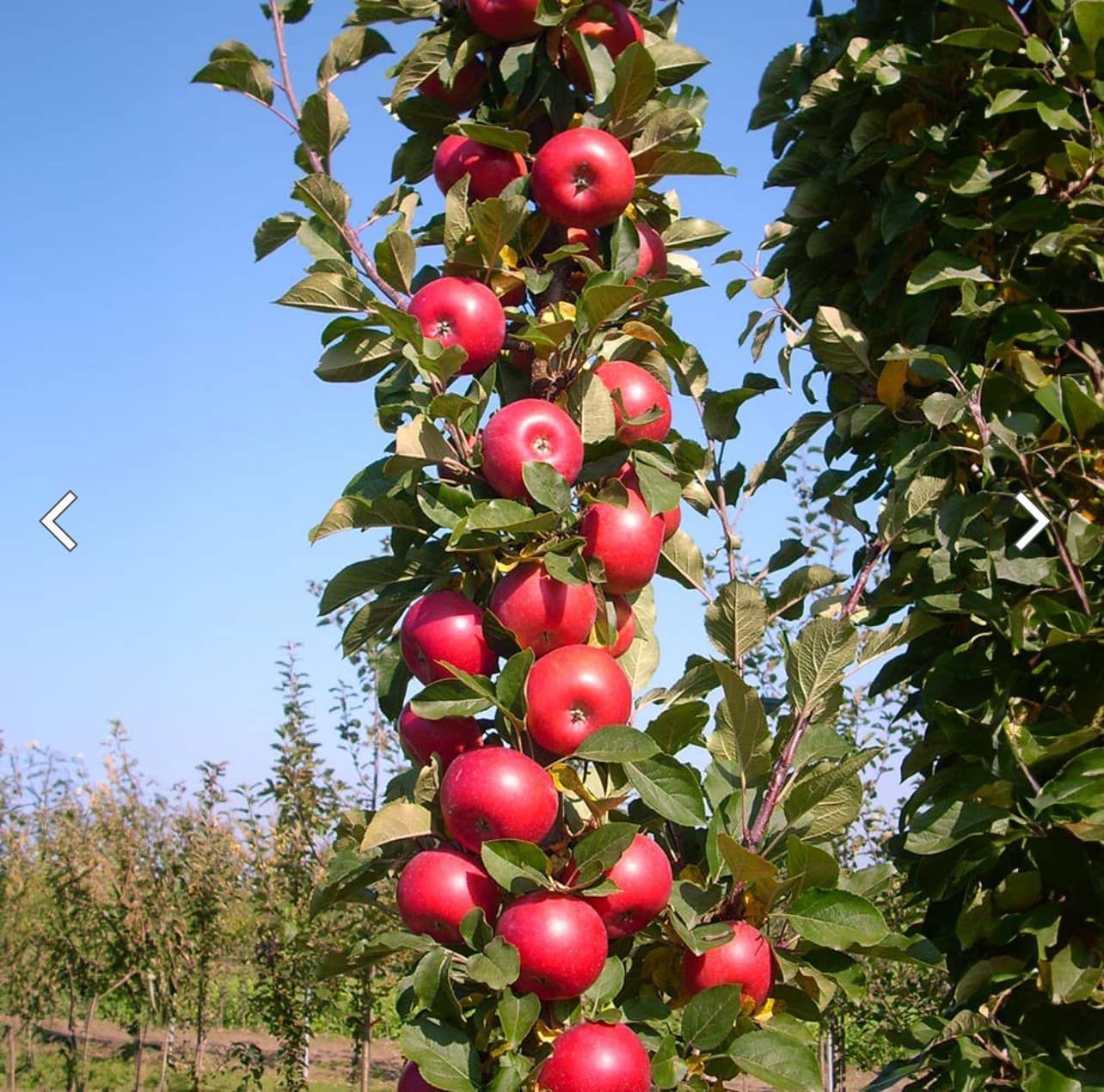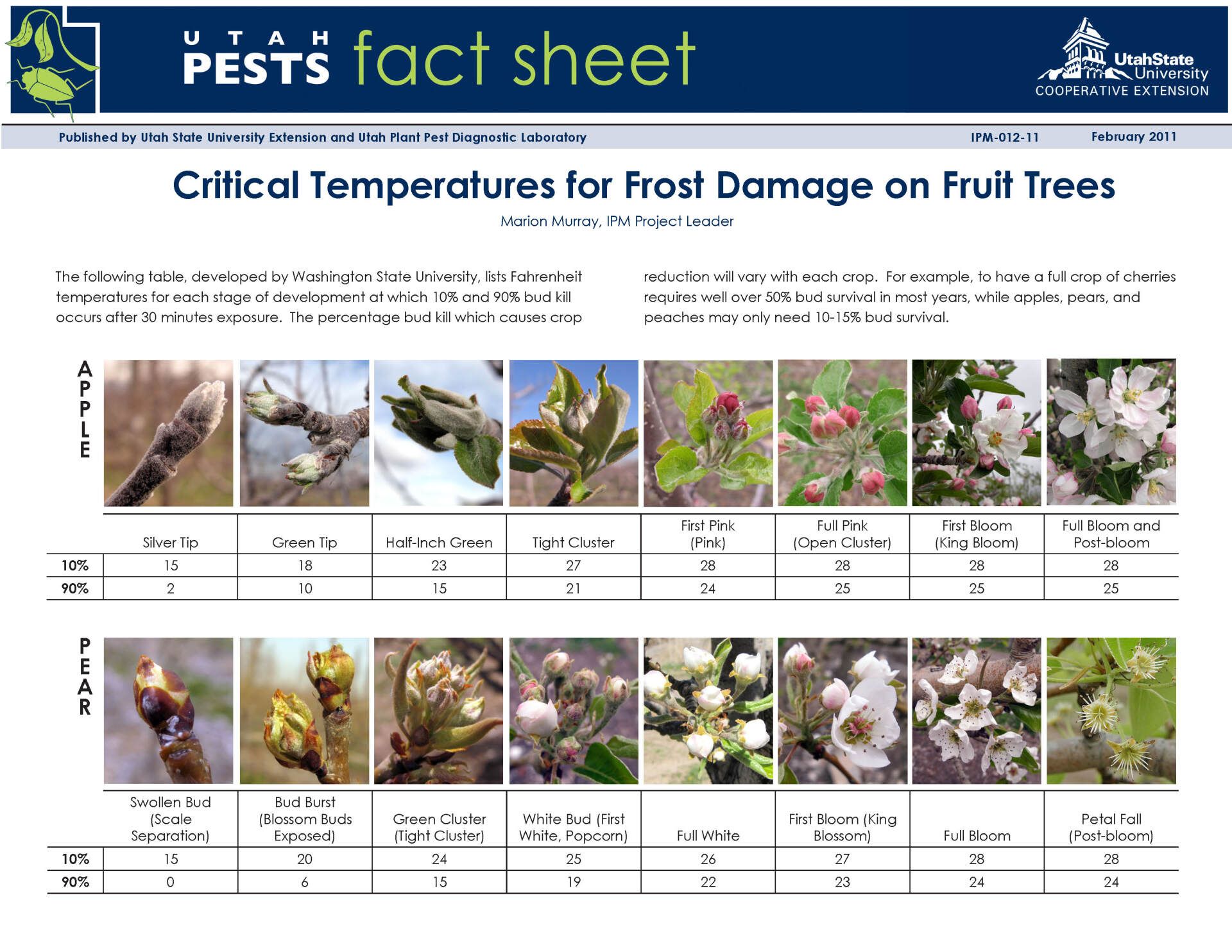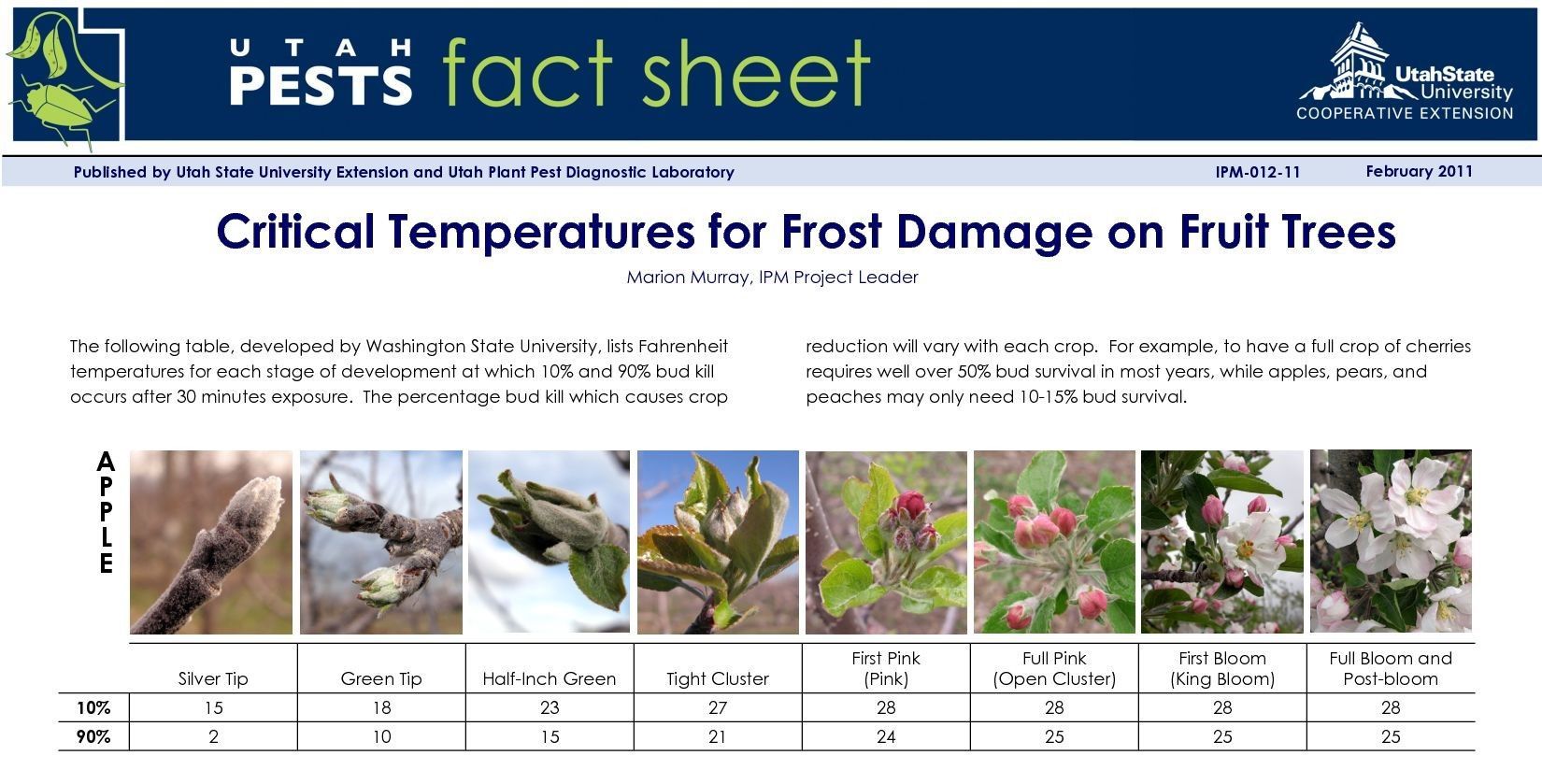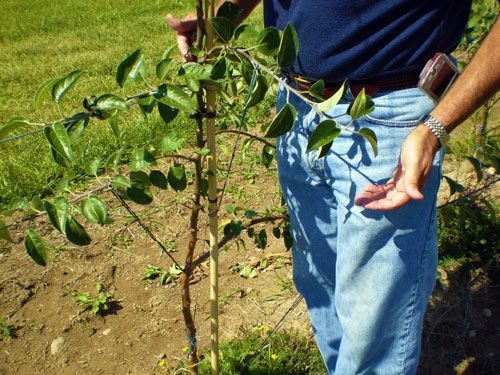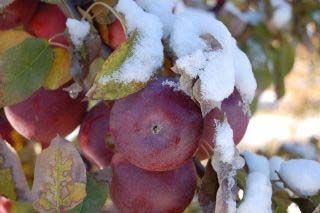Apple Scab Season Is Beginning
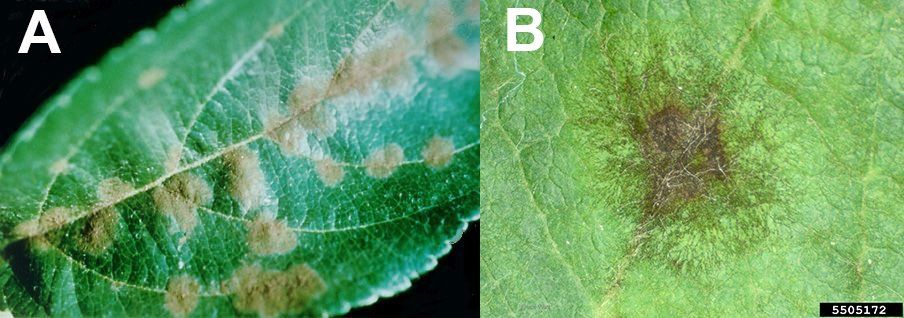
Apple scab is the most prevalent and most damaging disease to apples we have in the Midwest, and pretty much East of the Rocky Mountains. We are now officially emerging into the apple scab season as green tip and 1/4" green leaf tissue is seen on the apple trees. At green tip scab sprays should be applied according to a spray guide protocol (Fig. 1). In the spring, once temperatures rise above the 42 degree or so mark, apple scab fungal spores can germinate in water on the surface of apple tree leaves and eventually, on the fruit itself. The water or moisture that is on the leaves is termed "leaf wetness". The spores will germinate once the leaves are wet for a certain period of time at temperatures above 42 degrees On the leaves, olive green to brown spots appear on the site of the infection. If the leaves have not been protected from this "primary" scab infection, the spores will mature and produce more spores during "leaf wetness" periods and move onto the apples where they form a "scab" like lesion, if the fruit is not protected. We call the lesions on the apples "secondary" scab. With enough moisture (leaf wetness), the cycle continues throughout the growing season and destroys the crop. Each leaf wetness event at the proper temperature that occurs during the early growing season is called and infection period.
Managing Apple Scab
The apple scab fungus survives in dead leaves on the ground and over winters there on the leaves. A lack of spring rains can reduce its importance, but as a rule, apple scab requires yearly spray treatments. And, ornamental crab apple trees are also hosts. As plant parts mature and the weather gets warmer, susceptibility to this disease decreases, usually in June, but pinpoint scab can occur during extended periods of moisture during summer. The main objective in scab management is the reduction or prevention of primary infections in spring. Extensive primary infections result in poor fruit set and make scab control during the season more difficult. If primary infections are successfully controlled, secondary infections will not be serious. The key to success in scab control is exact timing and full spray coverage. Wet periods, temperature, and relative humidity are important factors. Because scab control often is part of a combination treatment aimed at other diseases and insect control, choice of materials and timing are also extremely important.
How Can an Infection Period be Determined?
Ascospores mature as spring progresses with a few ascospores usually maturing by bud break (green tip). The proportion of ascospores maturing progresses slowly until about the tight cluster stage of blossom development. From tight cluster through bloom the percentage of mature ascospores rapidly increases with most ascospores matured by the end of bloom. Unusual weather conditions may contribute to significant ascospore discharges earlier than or later than the model predicts.
Mature ascospores begin to discharge into the air within 30 minutes during periods of rain. When rainfall begins at night, discharge may be delayed until daybreak. Ascospore discharge usually peaks from pink through bloom, and nearly all ascospores have been discharged within 1 or 2 weeks after petal fall.
Apple scab infection periods can be predicted based on temperature and moisture (leaf wetness) conditions. The Mills Table (Fig. 2) below, derived from research by Mills and La Plante, gives hours needed at various temperatures under constantly wet conditions for primary spores (ascospores) to cause infection in spring. This system for forecasting scab and timing sprays has been validated for apple-growing regions in the Midwest.
To Spray or Not To Spray
Effective fungicide programs should be timed around infection events, inoculum availability, cultivar susceptibility, and specific characteristics of the available fungicides.
Season-long control is difficult if primary infections develop. Good control of primary infections allows use of fungicides to be reduced or omitted during the summer, once ascospores have been depleted and fruit become less susceptible. Control of primary infections has traditionally begun at or shortly after green tip, when the first ascospores become mature.
After ascospores are depleted, continue to monitor scab infection events and maintain spray coverage accordingly for at least two more weeks. Scout your trees for primary scab infections after this time. Both ascospores and conidia infect at similar rates when tested at equivalent temperatures and inoculum doses.
Standard apple cultivars vary widely in their susceptibility to scab, which will influence the intensity of the control program necessary for a particular variety.
Apple scab fungicides control disease in different ways. Protectants must be applied before infection occurs. Those with post-infection activity must be applied within a narrow time after the beginning of an infection event. Some fungicides can suppress production of conidia from recent infections or established lesions, pre-symptom and post-symptom activity, respectively. Understanding these activities and knowing which fungicides exhibit them is important for maximizing the efficiency of a fungicide program.
Monitoring for apple scab can be quite complicated for the home grower. But there is an alternative. Unless wetness periods are being monitored as outlined in the section above, you can simply apply protective or eradicant fungicides at regular intervals beginning with green tip. Spraying should be done every 7 to 10 days, depending on the number of rain events between sprays. If there are no rain events between sprays, a single protectant spray will last at least 10 days but not more than 14 days, based on the product's label directions. You will need to make sure that your trees and fruit are protected prior to any rain event if you are going to use only a protectant. A good protectant is Captan or Mancozeb. But, a protectant can lose its effectivness after 2" of rain, so you also want to keep an eradicant on hand like a myclobutanil, which is available as Spectracide Immunox.
A protectant like Captan has to be applied prior to a rain event. If no protection is available during the wetting event, then only an eradicant like Immunox can be applied that has a reach back of at least 48 hours. That means that it can still have an effect on the scab pathogen for up to 48 hours after a wetting event. A good option is to actually use both a protectant and an erdicant at the same time, like Captan mixed with Immunox, which will give you both protection and eradicant action after a wetting event. Be sure to monitor wetness periods throughout the spring to insure that trees are always adequately protected.
Immunox has a 72 to 96 hour reach back ability. That means that you have up to 72 to 96 hours to get a spray on which will still be effective against any scab infection event 72 to 96 hours previous. Immunox is a xylum mobile fungicide which means when applied to leaves it will move throughout the leaves it was deposited on but will not move out of that leaf (McGrath, M.T. 2004. What are Fungicides. The Plant Health Instructor. DOI: 10.1094/PHI-I-2004-0825-01. Updated 2016.)
Reference in this blog to any specific commercial product, process, or service, or the use of any trade, firm, or corporation name is for general informational purposes only and does not constitute an endorsement, recommendation, or certification of any kind by Royal Oak Farm, Inc. People using such products assume responsibility for their use in accordance with current label directions of the manufacturer.
Backyard Orchard Management @ Royal Oak Farm Orchard
Backyard Orchard Management @ Royal Oak Farm Orchard is a blog for the home fruit tree grower providing information about fruit tree management, fruit tree pruning & training and Integrated Pest Management from the IPM Specialist and Certified Nurseryman at Royal Oak Farm Orchard, a 22,000 tree apple orchard and agri-tourism operation located in Harvard, Illinois.
Click or tap any title to read that post.

